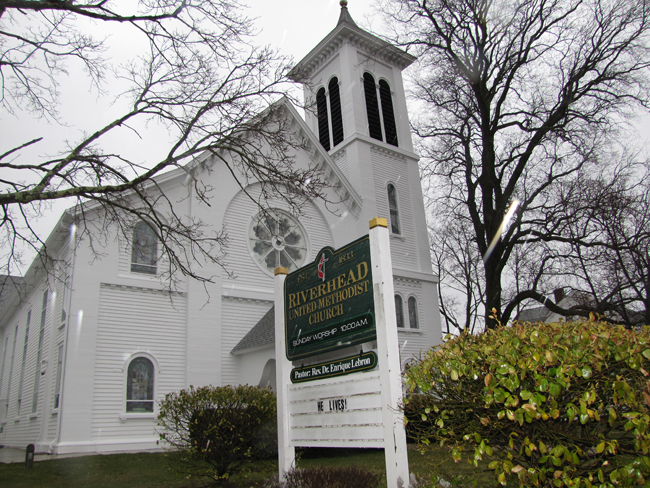Builder explains switch in pile-driving work

Why didn’t Georgica Green Ventures use the type of pile recommended by its own environmental impact study for the Riverview Lofts apartment complex?
David Gallo, president of Georgica Green, addressed this question via email this week. Vibration from ongoing pile-driving at the construction site has been criticized by members of Riverhead United Methodist Church, across the street, who believe it is damaging the 150-year-old church sanctuary as well as two adjacent buildings — also more than 100 years old.
A May 12, 2016, Geotechnical Evaluation Report prepared by J.R. Holzmacher P.E., LLC, for Riverview Lofts suggested using helical piles, which are screwed into the ground rather than pounded.
“Due to the weak unconsolidated soils encountered and the proposed higher first-floor elevation, we recommend the use of round hollow shaft helical piles,” that report states.
But Riverview Lofts instead chose a method that involves pounding the piles, which are needed to build in a flood zone.
Mr. Gallo’s email said: “After ongoing exploration of the site conditions, it was determined that the upper layers of soil stratum were extremely poor, and long-term settlement would be a major concern. Longer length driven piles were needed to reach a stronger soil bearing stratum. Helical piles were determined to be unworkable based upon the soils present on site after further exploration, and based upon the allowable settlement criteria provided by the structural engineer of record. The recommendation was then revised to driven piles to reach a suitable soil bearing stratum and prevent long term settlement of the new structure.”
Photo caption: The Riverhead United Methodist Church. (Tim Gannon file photo)





